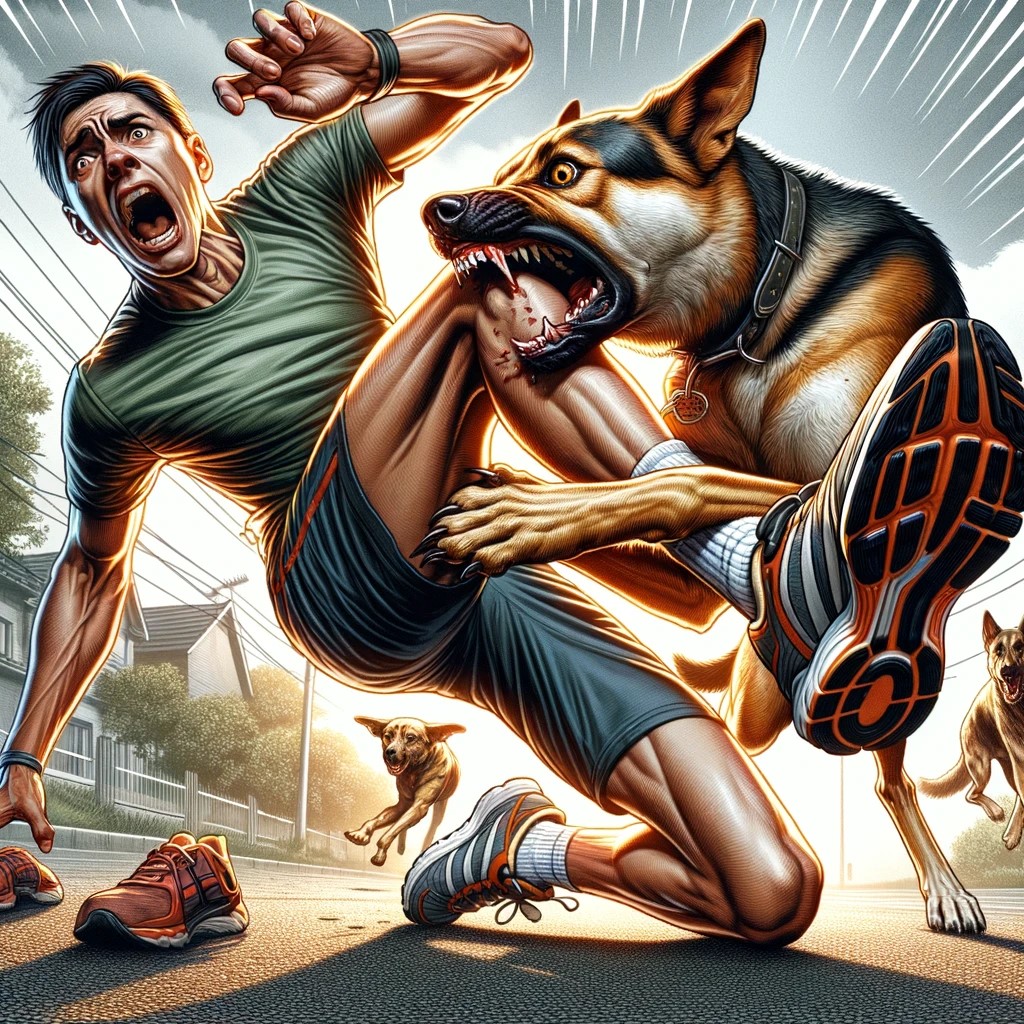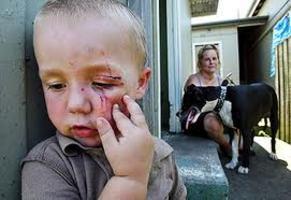Texas Dog Bite Lawyer
Texas Dog Bite Lawyer Dr. Shezad Malik Law Firm, represents people in Dallas, Denton, Collin, and Tarrant Counties and across Texas for catastrophic dog bite injury, mauling and dog attack cases.

The term “Texas Dog Bite” typically refers to the legal framework and statutes in Texas that address the issue of dog bites and attacks, outlining the responsibilities of dog owners and the legal recourse for victims. Texas does not have a specific “dog bite statute,” but dog bite cases are handled under its negligence and “one-bite rule” laws. Here’s an overview of how dog bite cases are approached in Texas:
Texas Dog Bite One-Bite Rule
Texas follows the “one-bite rule,” which means that a dog owner is not held liable for a dog bite if the dog has never bitten anyone before or shown a tendency to be aggressive. However, once a dog has bitten someone or demonstrated aggressive behavior, the owner is aware of the dog’s potential danger and can be held liable for future bites or attacks.
Negligence
In addition to the one-bite rule, a victim can pursue a claim based on negligence. To prove negligence, the victim must show that:
- The dog owner failed to exercise reasonable care to prevent the dog from biting.
- The owner’s failure to act reasonably resulted in the injury.
Liability
Dog owners in Texas can be held liable if it is proven that they knew their dog was aggressive or had a tendency to bite (as established by the one-bite rule) or if they were negligent in controlling or securing the dog.
Strict Liability in Certain Municipalities
Some local jurisdictions in Texas may have ordinances that impose strict liability on dog owners for bites, regardless of the dog’s previous behavior. This means the owner could be held liable for any damage or injury the dog causes, even if it was the first incident.
Criminal Charges
In severe cases, especially if a dog attack results in serious bodily injury or death, the dog owner can face criminal charges under Texas law. The severity of these charges can depend on the owner’s knowledge of the dog’s aggressive behavior and the precautions they took (or failed to take) to prevent the attack.
Preventive Laws
Some areas in Texas have specific regulations aimed at preventing dog attacks, such as leash laws, requirements for fencing or securing dogs, and even regulations concerning specific breeds.
In summary, the “Texas Dog Bite” legal framework is a combination of the one-bite rule, negligence principles, and local ordinances that together define the responsibilities of dog owners and the legal remedies available to victims of dog bites or attacks.
Texas Dog Bite How Dr. Shezad Malik Law Firm Handles Vicious Dogs and Owners
We hold accountable and aggressively prosecute dog owners, business owners, dog spas, property owners and people who have a duty to protect adults and children from vicious dogs in neighborhoods and especially in public parks.
Often, folks are hesitate to make personal injury claims after suffering dog bites or dog attacks because they do not want to sue a neighbor or family member who owned the dangerous dog.
Remember that homeowners’ insurance or business insurance may be available to compensate the injured victim. Contact the law offices of Dr. Shezad Malik Law Firm at 214-390-3189 to schedule a free initial consultation after a dog bite injury or dog attack.
Dallas Dog Bite Injuries and Fort Worth Dangerous Dog Attack
Some dogs are specifically bred to be attack dogs and have aggressive personalities and they are not meant to be home pets. An averaged sized man or woman can be seriously out gunned by such a vicious dog. And once the dog has brought the person down, fatalities can easily occur.
Texas Dog Bite Dangerous Dog Breeds

Any dog can be dangerous, even apparently-tame dogs will defend themselves if provoked. But there are certain dog breeds that are more dangerous than others.
The term “dangerous dog breeds” refers to specific breeds of dogs that are often perceived or statistically shown to be more likely to engage in aggressive or harmful behavior leading to attacks or bites. The classification of a dog breed as “dangerous” can be controversial and is subject to debate, as many experts argue that individual dog behavior is more influenced by factors like training, socialization, and owner behavior than by breed alone. However, in some legal and insurance contexts, certain breeds are labeled as dangerous due to a perceived higher risk of aggression.
Commonly Listed Dangerous Dog Breeds
While the list of dangerous dog breeds can vary depending on the source, some of the breeds that frequently appear include:
- Pit Bull Terriers
- Rottweilers
- German Shepherds
- Doberman Pinschers
- Alaskan Malamutes
- Siberian Huskies
- Bullmastiffs
- Chow Chows
- Great Danes
- Boxers
Controversy and Criticism
The concept of labeling specific breeds as dangerous is controversial for several reasons:
- Individual Variation: There is considerable variation in temperament and behavior within each breed, and not all dogs of a “dangerous” breed are aggressive.
- Owner Responsibility: The behavior of a dog is often more reflective of the owner’s care, training, and socialization practices than the dog’s breed.
- Stigmatization: Labeling breeds as dangerous can lead to stigmatization, making it harder for dogs of these breeds to be adopted from shelters and potentially leading to increased rates of euthanasia.
- Statistical Interpretation: Data on dog attacks can be misleading or biased, as it may depend on media reporting and public perception. Large or powerful breeds are often more reported in incidents of attacks, regardless of the actual frequency or circumstances.
Legal and Insurance Implications
In many places, laws and regulations may target specific breeds as part of dangerous dog ordinances. For example, some jurisdictions have enacted breed-specific legislation (BSL) that imposes restrictions or bans on certain breeds. Similarly, insurance companies may have policies that exclude coverage for incidents involving breeds they classify as high-risk.
In summary, the designation of certain dog breeds as dangerous is a contentious issue influenced by statistical data, public perception, and individual experiences. Most animal behaviorists and experts advocate for evaluating dogs on an individual basis rather than by breed, emphasizing responsible ownership and training as key factors in preventing dog aggression and attacks.
Center for Disease Control and Prevention Dog Data
The United States Center for Disease Control and Prevention (“CDC”) has important data about dog attack fatalities occurring in the United States over an eighteen-year period.
According to the CDC’s data certain breeds are more dangerous than another, and it can indicate that attacks by some breeds are more ferocious than others.
Based on the number of deaths by breed, the following are the most dangerous dog breeds in the United States.
1 Pit Bull
The most dangerous breed in the U.S. – is the “pit bull.” The term “pit bull” actually applies to a family of breeds. It seems that most dog bites covered by the media involve pit bulls.
Over the eighteen-year period covered by the CDC, pit bull attacks resulted in 60 fatalities. This was twice the number of the next closest breed – Rottweiler.
2 Rottweiler
Rottweilers were originally used as herding dogs. Rottweilers caused nearly half the number of deaths as pit bulls during the CDC’s reporting period.
3 German Shepherd
The third most dangerous dog in America, according to CDC fatality data, is the German Shepherd. German Shepherds were developed as herding dogs. German Shepherd attacks resulted in nineteen deaths in the United States during the CDC’s eighteen-year reporting period.
4 Husky
Husky is a group of dog breeds which are used as sled dogs. Huskies fur has allowed them to adapt to life in the more temperate regions in the U.S., because it protects them not only from cold but also from heat. Husky attacks ended with fourteen deaths during the data period.
5 Alaskan Malamute
Alaskan malamutes were originally used as sled dogs in Alaska. Alaskan Malamute attacks resulted in twelve deaths during the CDC’s reporting period.
6 Doberman Pinscher
Children are five times as likely to be bitten by a Doberman than they are to be bitten by a Labrador Retriever. The CDC reports that Doberman attacks ended with the death of eight people during the reporting period.
7 Chow Chow
Chow chow breed was developed in Mongolia thousands of years ago and was then introduced into China. Some homeowner’s policies exclude claims for Chow attacks. Chows were responsible for the same number of deaths as Dobermans during the CDC reporting period.
8 Great Dane
Great Danes are also known as German Mastiffs. Adult males usually weigh in excess of a hundred pounds. Great Dane attacks resulted in six deaths during the reporting period.
9 St. Bernard
St. Bernards are very large dogs with large heads. Adults weigh between 140 and 260 pounds. St Bernards were responsible for four deaths during the CDC data period.
10 Akita
The tenth most dangerous dog in America, according to the CDC data, is the Akita. Akitas have bear-like heads, and adults males can weigh over 100 pounds. Akitas were responsible for the same number of deaths during the reporting period as were St. Bernards.
Texas Dog Owners Are Held Responsible
Texas law holds a person responsible for the personal injuries sustained by the negligence of the dog owners for a dog bite or dog attack.
There is no excuse for a dog bite injury if a person or young child is attacked by a dangerous breed of dogs, or one known to be vicious.
We aggressively pursue financial compensation for dog bite and dog attack victims who have suffered from animal attacks involving dangerous dogs or known vicious dog breeds such as Rottweilers, German shepherds, and Pit bulls etc.
How Dr. Shezad Malik Law Firm Handles Vicious Dogs and Owners
We hold accountable and aggressively prosecute dog owners, business owners, dog spas, property owners and people who have a duty to protect adults and children from vicious dogs in neighborhoods and especially in public parks.
Often, folks are hesitate to make personal injury claims after suffering dog bites or dog attacks because they do not want to sue a neighbor or family member who owned the dangerous dog.
Remember that homeowners’ insurance or business insurance may be available to compensate the injured victim.
Contact the law offices of Dr. Shezad Malik Law Firm at 214-390-3189 to schedule a free initial consultation after a dog bite injury or dog attack.
Texas Dangerous Dog Act
The Texas Dangerous Dog Act is a law that applies to anyone who owns, possesses, or controls a dangerous dog. The Act is in Chapter 822 of the Texas Health and Safety Code.
The Act defines a “dangerous dog” as one that either (1) makes an unprovoked attack on a person that causes bodily injury or (2) commits unprovoked attacks that cause a person to reasonably believe that the dog will attack and cause bodily injury.
The law imposes certain obligations on an owner, including obtaining insurance or delivering an animal to animal control after a determination that a dog is dangerous. The Act also provides criminal penalties for dangerous dog owners.
If you have additional questions or concerns regarding Texas laws on Dog Bites or Dog Attacks, contact Dr. Shezad Malik 214-390-3189 or click here and fill out our contact form for a free consultation.
Read more about Dog Bites and Dog Attacks here
Our law firm’s principal office is in Dallas and we have offices in Fort Worth, Texas, and we represent people across Texas, for Personal Injury and Wrongful Death.


